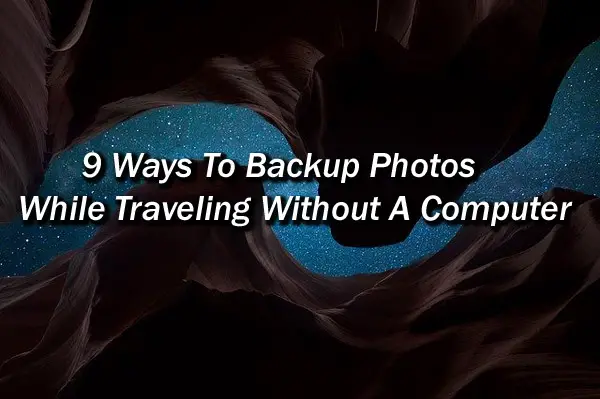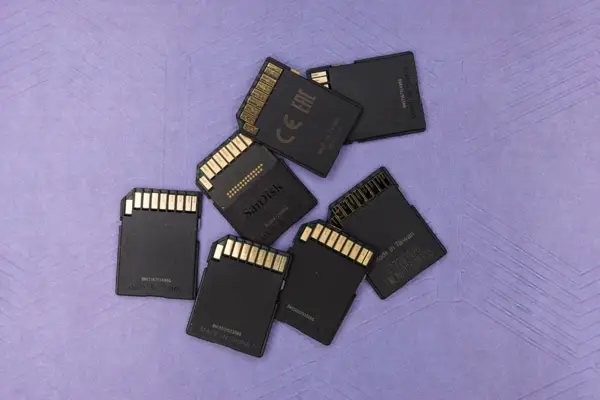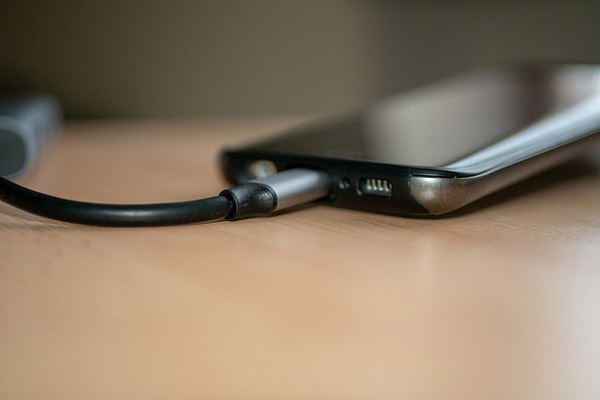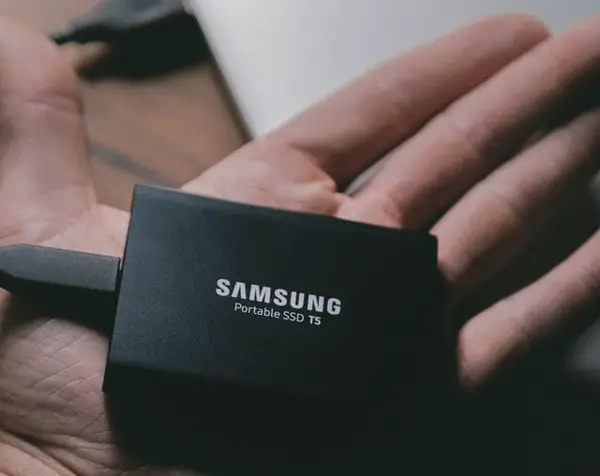How To Move Pictures From Camera To Flash Drive With No Computer
Film this. Yous're on an astonishing trip. You've been taking photos left and right. You lot're admittedly ecstatic considering of the incredible images y'all've been blessed to capture.
And then, on the terminal day of your trip, something happens. It could be anything, your camera gets stolen, or you lose the memory carte, or you lot douse the whole kit and kaboodle in the river. Information technology doesn't matter what, merely something destroys/erases/loses all your amazing photos.
What do you lot do?
If you lot've read this postal service and followed the tips we're about to share on how to fill-in your photos even without a calculator, you'll breathe a sigh of relief because y'all were prepared. You haven't lost all your incredible images — merely maybe a camera or a memory card, which can exist replaced.
If y'all haven't read this mail service…well, then we'll just give you a moment to mourn your incredible loss…

…and then suggest that yous read this mail and so that this atrocious occurrence never happens to y'all once more.
1. Divide and Conquer
Some people may tell you that simply dividing upward your photos is a great mode to limit loss if the unthinkable occurs. For instance, changing out your retentiveness cards every day and storing them in different locations.
The obvious problem with this is that there is no actual 2nd copy of your photos. If yous lose a memory card, you still lose all the photos on that card. You won't lose all the photos from your trip, but the goal here is to not lose any.
On top of that, keeping niggling memory cards in different locations tin can get tricky and almost certainly makes it easier to lose one or ii — even if it'southward just because y'all forgot where you put it! It's also easier to misplace them in your luggage, or even exit 1 backside at a hotel. They're little and sideslip out unnoticed really easily.
For this reason, nosotros don't recommend this (rather lazy) method of limiting your photograph loss. Instead, nosotros recommend one of the methods below to make an actual second copy of all your photos.
Because your trip is so amazing that even losing the photos from one twenty-four hours would be tragic.
2. Dual Cards in Photographic camera
One simple solution may come already built-in to your photographic camera. Some cameras, such equally the full-frame Sony a7iii , have dual card slots in the camera, significant y'all can put two SD cards in the camera at the same time.
Sony has it set and then y'all tin can use this feature in several means. You can write JPEGs to 1 bill of fare and RAW files to the other, or shoot video on ane and stills on the other. You can take one card whorl over to the next, or you can but write the same information to two cards, giving you an instant backup.

Store your second card in a new location and now you lot've got a running backup of all your images. It'due south a simple, stress-costless manner to make sure your photos are e'er backed up. It's also handy in example you e'er accept a retentiveness card that goes decadent (rare, but it happens). At to the lowest degree yous've got a 2nd copy of your photos!
Check out this photographer's feel in Greenland and what he has to say about dual card slots.
Nevertheless, if you don't have a dual bill of fare slot camera, let'southward see what other options you take.
3. Save to Your Telephone or Tablet
Perhaps the easiest method for saving your photos without a laptop is to apply a replacement device. You're probably already carrying at least a smartphone with yous and a tablet is fifty-fifty better.
Once you transfer the photos you can fifty-fifty use editing apps such every bit Snapseed or Lightroom Mobile to edit your images on the road. Then, you lot tin share your photos to social media and give everyone a sneak peek of all the amazing images you lot're getting on your trip.
There are two small roadblocks to this method. First, since you can't generally only pop an SD card into your smartphone, how will y'all transfer them? Second, will your device accept enough space? Smartphones and tablets generally accept limited storage capacity and the heavy RAW files from your fancy DSLR camera will fill them up quickly.
Here is how to get around the first roadblock. Nosotros'll talk about the 2nd i a bit afterward on.
With an Adapter
In some cases, you can plug your SD carte du jour into your phone or tablet with a simple adapter. iPhone or iPad users can get the Apple Lightning to SD Card reader . Simply plug the SD card into one finish and plug the other into your device. The Photos app volition automatically open on an iPad and brainstorm organizing the photos into Moments, Collections, and Years.
Those with an Android phone or device that has a USB C connection tin use an SD card reader similar this one from Anker . You can also get apps to automatically sort and store your photos as you transfer them.
Alternatively, Android users can get an OTG (On-The-Go) cable that you tin plug into any Android telephone or tablet that has an OTG (or micro USB) port. This allows you to plug in your menu reader and access the SD card.
You tin can also utilise a USB hub to connect both the card reader and an external difficult drive or USB flash bulldoze and utilise your phone or tablet to manage and transfer the photos.
Keep in mind that your phone is responsible for powering all connected devices and not all phones will be able to handle the load. Definitely examination your system before going out on the road to make sure it works. We recommend sticking with a flash drive to lessen the load on your telephone. Nosotros'll become more into hard drives and flash drives in a bit to help you determine what method is right for you.

With Wi-Fi
Many cameras at present come with built-in Wi-Fi. Exactly how it works and what you can exercise with the Wi-Fi varies from model to model. Nevertheless, nigh will allow you lot to at least connect the camera to your device via a wireless connectedness and transfer photos.
We suggest getting your connexion set up before your travels to make certain you have information technology straightened out. You'll ordinarily need to download an app, and then fix up a Wi-Fi network from the photographic camera to which yous can connect the device.
Setting information technology upwards the beginning time is the most difficult. Once it'south been set up, you should be able to connect hands with the username and countersign and start transferring photos. If you lot accept a lot of photos, this tin take a while, and so we recommend doing this frequently to avoid accumulating tons of photos between transfers.
These are both unproblematic solutions to the connexion problem, only how nearly having plenty infinite? It'due south likely that your smartphone won't exist able to handle even one day of your camera's heavy RAW files.
For that, you lot need some kind of extra storage device.
There are a number of storage methods you can use to salve your photos in one case you've passed them to your phone or tablet.
Let's look at them here.
4. Save to the Cloud
The cloud is an excellent place to ship your photos while traveling. In fact, it is perhaps the most secure identify to make sure you don't lose them. After all, information technology's possible to lose even your photo backups to theft or lost luggage or whatever other eventuality when y'all're traveling.
Once you accept your photos uploaded to your phone, you can simply pass them along to the deject. You can ready your telephone up to do this automatically.
Cloud storage is relatively inexpensive, although y'all will normally pay a monthly subscription fee. Some companies charge more for more storage space, although many offering an unlimited option.
The dainty matter nigh storing photos in the deject is that some services will allow you to continuously back upwards your laptop and other devices. Then if annihilation happens to your equipment someday — not simply when you lot're on a trip — photos or data that you lot hadn't had a chance to dorsum upward even so will exist safely waiting for you in the cloud.
However, backing up to the deject comes with a big problem when traveling. Internet access is non always reliable. On top of that, transferring heavy RAW files to the cloud requires a lot of bandwidth. Information technology could take hours to upload a handful of photos depending on the connection speed.
For this reason, we recommend uploading to the cloud when possible but don't depend on it as your only source of fill-in.
5. Micro SD Cards
If your telephone is equipped with a removable micro SD carte du jour, this could be a great option for backing up your photos. Micro SD cards similar this Sandisk Extreme are inexpensive and can concord a surprising amount of information. You'll see that 128GB and 256GB versions are mutual and if yous're willing to pay a lilliputian actress you can get a menu that holds upward to 400GB! Pretty good for a dinky little bit that y'all tin stick into your phone.
However, considering they're so tiny, they can also be easy to lose if yous're storing them outside your phone. Be sure to have a dedicated spot for them where they won't be able to hands slip through the cracks. If you lot decide to continue the card in your phone, be sure non to store your phone and your camera in the same place when traveling.
What if you lot're non traveling with a smartphone or tablet? Or perchance you would adopt a different method for backing upwards your photos than using relatively fragile SD cards and micro SD cards. There are a lot of options. Allow's take a wait at some defended storage devices you lot tin can use.
6. USB External Difficult Drive
First upward, an external hard drive. For a cheap version of this, if you have an quondam unused hard drive lying effectually, yous can enclose it and use it as an external drive. If not, you can get one relatively cheaply like this 2 TB Western Digital drive.
Keep in heed that external hard drives are not incredibly rugged unless you get a solid-land (SSD) one without moving parts like this 500 MB Samsung drive. Unfortunately, this pushes the cost upward a bit.
One time y'all get habitation you tin plug your external hard drive directly into your computer to access and process your images.
seven. Portable Hard Drive with Built-In SD Card Reader

Of course, to go the photos on an external difficult bulldoze, you'll need a device such as a tablet or the FileHub nosotros'll talk about in a minute to transfer them. That is, unless you go a hard drive that has a built-in SD card reader.
If yous've got some money to fire, a Gnarbox 2 is a good option. This daze, water, and grit resistant solid-state difficult drive allows you to plug the SD bill of fare right into the bulldoze and transfer photos at the touch of a button.
Information technology's also equipped with USB-C ports to plug in other devices and has a built-in battery with a decent 6 hours of life, making it a pretty handy device. Even so, as mentioned, yous'll pay a pretty penny.
For a more than budget-friendly option, check out this Western Digital My Passport Wireless Pro portable external hard drive. You lot tin plug the SD card directly into the drive or connect it to the photographic camera with a USB 2.0 port. It has a 10-60 minutes battery life and tin can even be used as a ability banking concern to charge your phone or other devices in a pinch.
It'south not nearly as rugged as the Gnarbox, but if yous're willing to pay a bit extra information technology does come in a solid-state version which tin can accept a bit more than of a chirapsia.
8. USB Wink Drives
Many travel photographers don't want to accept to baby their external hard drives. They're already concerned nearly protecting their photographic camera equipment and ane more thing to worry about is a pain.
To that end, flash drives are a very convenient option. For instance, take a look at this great 128gb Sandisk Cruzer wink drive.
Flash drives are pocket-sized, sturdy, and cheap. You won't be able to connect them directly to the SD carte du jour or camera, but a suitable transfer device is cheap and easy to find. In fact, yous can use the ability bank that nosotros're going to talk almost next.
ix. Power Depository financial institution
Another great option for budget-conscious photographers is to use a power bank. This inexpensive FileHub from RAVpower can practice several swell things. Offset, you lot can wirelessly connect portable difficult drives or SD cards to other devices for data transfer. Or you can utilize it equally a portable router to set up a wireless network to share one wired internet access among several wireless devices.
Don't programme to do your wireless transferring on the plane. You may not exist allowed to utilise the wireless features while in flight.
You can as well get apps that will allow you to access the hub with your tablet, giving y'all the ability to preview your images as well as back them up. If you plan to use this feature, it may be a practiced idea to shoot low-quality JPEGs along with your RAW files. This will allow you to preview the JPEGs more chop-chop and easily. You will as well be able to more than conveniently upload lighter files to social media while on the go.
It doesn't have any internal storage of its ain, simply it's easy to connect your SD cards to an external difficult drive or flash drive for data transfer. Information technology also has a large enough battery to use as a portable charger for your telephone or camera. Quite a chip of bang for very footling buck!
Which Method Is All-time?
At present that you have a few ideas of ways you can back up your photos without a laptop, which method will piece of work all-time for yous? For that, you lot need to recall well-nigh your needs as a lensman, your habits every bit a traveler, and your budget.
Storage Infinite
First up is how much storage space you'll need for your backups. This volition vary considerably depending on your gear and how many photos you plan to take.
If yous consider yourself a casual lensman and the purpose of your trip is not solely to take photos, y'all might but end upwards taking a few hundred images. However, serious photographers can easily come dorsum from a dedicated photography trip with several thousand images!
Having enough storage space for your needs will be crucial. A backup method will be useless if yous don't accept plenty space for all your photos.
Earlier your trip, sit and approximate your needs. First, find out your camera's average epitome file size. File sizes volition vary a picayune depending on the photographic camera settings and file compression of each photo, but you can go an thought either by shooting a few images and reviewing the image info or checking your camera's manual.
Keep in heed that if you're shooting in JPEG, the file size will be significantly smaller than if yous choose to shoot in RAW. Likewise, if you shoot in both, as some photographers like to do, you'll need to combine the boilerplate file size of each to observe your total.
To requite yous an idea of sizes, JPEGs average equally follows:
- 3 MB on a 10-megapixel camera
- 4.ii MB on a 14-megapixel photographic camera
- 6.half-dozen MB on a 22-megapixel camera
In these examples, you lot can store 10,000 photos from a 10-megapixel camera or nearly four,800 photos from a 22-megapixel camera on a 32 GB SD card. Neat!
Still, shooting in RAW and using higher end cameras with more megapixels volition modify things significantly. A 20.2-megapixel photographic camera typically puts out a RAW file of effectually 25 MB. This sounds like a lot until you come across that some cameras create RAW files around 46, 52, or fifty-fifty 65 MB per file!
When y'all're taking 10,000 photos at 65 MB per file, you lot'll need at least 650 GB of storage space.
Keep in listen that we're only talking almost taking stills here. Shooting video requires significantly more than space.

Physical Space and Convenience
Afterwards you've determined your storage space needs, it'due south time to think about how much physical infinite information technology takes up. If you demand a lot of storage space and don't take much extra room, SD cards are a keen mode to become. Notwithstanding, unless you bring along some kind of device with a screen you won't exist able to review or edit photos until you get dwelling (unless you practise it in-photographic camera).
Flash drives are a piffling bigger, but notwithstanding a small, convenient option. It takes a lilliputian more finagling to transfer the photos to the flash bulldoze as we've explained, but the reward is their durability. Flash drive can generally take quite a beating before you'll lose any information. Once again, you won't be able to review photos unless you lot have a device.
A power bank, though information technology doesn't have internal storage, is handy because of all information technology'south features. It makes it easier to transfer information wirelessly, as well as review photos on a tablet or other device. Finally, it serves equally a portable charger in a pinch!
When yous need a lot of storage space, SD cards and flash drives tin can showtime to lose their appeal. They're still small and user-friendly, but keeping rails of them can start to exist a challenge, not to mention they can stop upward to be a disorganized mess that you'll accept to sort out when you get home — another potential spot for photo loss.
In that example, an external hard drive may exist the way to go. A 2 TB difficult bulldoze isn't too expensive, though you lot'll accept to exist conscientious with it equally information technology can't stand upwards to significant abuse. You can besides opt for a more than sturdy solid country hard drive, but the toll will go up significantly.
Budget
There are lots of fancy gadgets out there like the Gnarbox 2 we mentioned that will practice an amazing job protecting your photos and come with an enticing list of features. While it's nice to have a virtually indestructible way to store photos, it isn't always practical for photographers on a budget — or photographers who would rather put their backlog cash toward a new lens.
Once again, SD cards, microSD cards, and wink drives are all budget friendly options. They also come up in a diversity of storage sizes and so yous choose the one that best fits your needs.
External hard drives as well aren't besides expensive and are good for when you need lots of storage, as we've mentioned.
The most important affair is to develop a solid system that works for you. The most expensive setup on the list won't practice you lot a lick of good if you lot don't understand how to apply it or it'southward then complicated that it discourages you from using information technology.
Here is one photographer'southward approach to traveling computer-less:
Proceed Your Images Condom and Sound
The images you take while traveling may be some of the nearly incredible images you take equally a photographer. Losing them is an inexplicable loss. Those of you who have already experienced this can attest, information technology's a horrible feeling.
The good news is that with a little flake of inexpensive hardware, or a creative setup, you can hands create a portable fill-in of your photos while on the go. Permit us know in the comments which one works best for yous!
At present you know how your backup your photos while traveling without a figurer. For more than travel photography tips, bank check out this mail service on choosing the best photography gear to haul with you!
Source: https://www.photodoto.com/9-ways-to-backup-photos-while-traveling-without-a-computer/
Posted by: preusserforthand.blogspot.com

0 Response to "How To Move Pictures From Camera To Flash Drive With No Computer"
Post a Comment